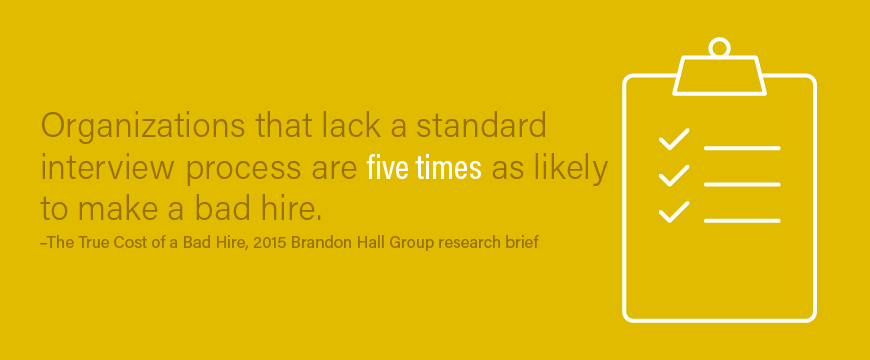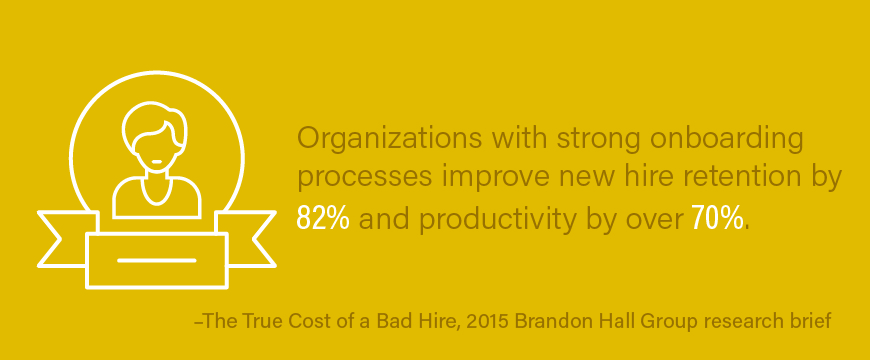
This blog is part of our ongoing how-to series, designed to help you tackle big initiatives and challenges with confidence. To see other blogs in this series, click here.
If you’re a rapidly growing company, you’ve realized what worked before, when your company was small, does not scale in a favorable way. But your HR expertise can help make scaling a business as painless as possible.
Here’s how you can position yourself (and your HR team) as a valuable, strategic partner to help your leaders and organization avoid the pitfalls of uncontrolled business growth.
Step 1: Evaluate HR’s processes
You have to have your own house in order first before you can support the rest of the company properly. That means having HR systems and processes in place, like succession planning, that will work well for the entire business, and using technology that will grow with your business. As your organization continues to grow, it’s more important than ever to find ways to use automation so you can avoid time-consuming and costly manual processes that get even messier as there are hundreds of employees to keep track of.
Robust HR software gives you the tools you need to help identify when it’s time to hire before it’s desperately time to hire by building succession plans. Workforce analytics provide the insight you need to work on succession planning and look at important HR data like overtime, scheduling, performance, turnover and more. Technology that shows a snapshot of this data will be helpful toward getting staffing levels just right. While still possible, trying to tackle this process without technology by manually creating regular reports will be extremely difficult, especially when there are more employees to evaluate.
Build a strategic foundation for your team
Since your first step is getting your own house in order, you might as well build a strategic foundation. That means understanding the business. Doing so will help you better understand what kind of talent you have to find, and why you must structure your HR department to attract and retain that type of talent.

Start by encouraging your HR team members to schedule regular check-ins with leaders in other departments. A strong relationship between HR and management enables and drives growth in a strategic way and your department needs to strive to be a highly sought-out business partner to help with uncontrolled growth. They can shadow different departments so they can truly understand operational issues. Seeing your team take initiative to understand how your business works will help leaders trust that HR knows what they’re talking about when they mention different parts of their jobs and responsibilities.
Also, using organizational charts can ensure HR and management are evaluating the same information and building robust and scalable succession plans. When a manager is looking to add to his or her team, HR can look at the existing organizational chart and suggest ways to reorganize if necessary. Or, they may be able to point out that a manager needs to hire a midlevel manager to help out instead of hiring additional workers.
Working closely with leaders when it’s time to grow departments gives you and your team additional insight to offer: You all can help talk through individual employees’ leadership skills and suggest promotions from within. While it’s important to hire new talent from the outside because they can bring new perspectives to the business, you also want to make sure you’re showing a ladder to your current workforce by promoting from within. Managers also can discuss their teams’ performances with you and share insights about specific pain points they need help with. Gather all the data you have and compare it to the data from the managers, then schedule regular reminders to update and review data wherever it’s stored so you can accurately identify trends.
Technology that removes paper process (like Paycom’s Documents and Checklists) is ideal to use because it keeps all employee information in one place.
Once you have technology established to help your business continue to grow effectively, you may realize you don’t need to hire as many HR positions. However, after systems are in place and manual processes are eliminated, you may consider hiring specific strategic help in HR. That may mean moving existing HR team employees into more strategic roles and bringing on more junior recruiters or generalists to help with the volume of work.
Identify where you need the most help and create a plan of attack. If your HR team struggles to process new-hire paperwork properly while also onboarding every new employee, an HR generalist or assistant could help most. If the majority of people in your HR department spend most of their days looking for talent for your growing company, additional recruiters could take that off their plates.
Step 2: Establish hiring and recruiting processes that quickly identify ideal candidates
Hiring the wrong people may not be worse than being short-staffed, but it comes close.

Simply hiring the nearest warm body, often referred to as “reactive hiring,” can lead to costly hiring mistakes. Technology can help your recruiters better evaluate candidates right away, especially when you have many applicants. With an applicant tracking system in place, you can quickly identify candidates who may be a good fit for your organization and keep a record of where candidates are in the recruitment processes while making sure everyone involved in hiring has the same information.
Making sure everyone in the hiring process, including front-line managers, hiring managers and recruiters, is on the same page is incredibly important. You must train these employees on how to properly conduct an interview, including what questions they can and cannot ask candidates, and your organization’s processes. A learning management system (LMS) can help you make sure your employees have taken the training and received the information they need.

The importance of training on hiring
Without an LMS, there will be more work for your team, but documenting a process and training regimen is still possible. Start by putting together a checklist or similar document that lives in a central place to make sure the correct questions are asked of every candidate. Everyone involved with interviewing should know what’s expected to be covered in each interview so no vital questions are missed. You’ll also need an organized and accessible filing system to keep all candidate files and interview notes in the same place for everyone involved to be able to review.
When you have the time to identify exactly the type of talent your organization is looking for, perhaps through personality assessment tests of your current workforce, job descriptions can be tailored to the candidates you’d be most interested in. Taking a small amount of time upfront to craft effective job postings can save your team time in the long run and help build a more qualified candidate pool.
Step 3: Streamline onboarding
With a robust onboarding system established, you can make sure a department that may have started with 50 people grows effectively to 250 without many unnecessary pain points. With an onboarding system in place, new hires are able to contribute sooner. HR must help establish and document processes for various departments in your organization so information will be passed to new hires in a format on which everyone already has agreed.
You also want to avoid scaring off new hires with broken systems and disorganization. Companies with weak onboarding programs lose the confidence of their new hires and are more likely to lose them in their first year, according to a 2015 Brandon Hall Group research brief. This will require meetings with departments to find out what new hires often struggle with and creating documentation and training to combat it. Create role-specific onboarding checklists to make sure all important documents (like NDAs or I-9s) are filled out and involve the correct parties in ensuring completion.
Plus, the right HR tech helps mitigate compliance issues beyond onboarding as an organization scales. For example, it can tell you when to offer COBRA and help keep you compliant with ever-changing laws, like the Affordable Care Act.

Training is a vital part of successful onboarding
Establish consistent training to help ensure every hire is on the same page. Make sure existing employees also have taken some form of the same training so the new hires aren’t the only employees to learn what managers and HR have deemed valuable.
Take care to identify what training is important and consider recording in-person trainings. Getting together for an in-person training was much easier with a department of 25, but hard to schedule when the team grows to 100. (Although smaller teams can still benefit from recorded training, because team members can go back and revisit trainings whenever they need a refresher.) And as your workforce grows, it’s increasingly important that all employees are on the same page about vital company information. It’s a lot easier to correct one manager’s mistake than to correct their entire team, especially if the mistakes were completely avoidable with training in place. Find somewhere to store these videos and update them frequently. You must include these trainings in your new-hire/onboarding checklist.
Technology that makes it possible for you to create your own training specific to your organization is incredibly helpful. For example, Paycom Learning makes it possible for you to upload your own videos or training sessions you have held previously and assign them to employees in Employee Self-Service.
Nurture corporate culture
Build a common language throughout your workforce and be culture advocates by making sure policies and procedures are clear to everyone. When a large corporation grows, someone has to own distributing policies and procedures, and who better to do so than HR?
This is critical because with rapid growth, culture can suffer. Suddenly, employees don’t understand why certain things are done, other than hearing: “That’s the way we’ve always done it.” Someone needs to be actively working to establish, grow and nurture the culture in your organization. You and your team can help shape the culture and employer brand. Assist with documenting a company’s values and then share them with the entire company. If values have already been created, include training about them in the onboarding process.

Create opportunities for employees to get to know each other. What was easier when the departments were small becomes difficult when departments are large. You don’t have to suggest your company spend a lot of money on events for the employees, either. You may consider celebrating offbeat “holidays” like National Pi Day. You also can suggest cost-effective teambuilding activities to managers, like setting aside an afternoon to work on a group project.
Acknowledge and celebrate upcoming birthdays and anniversaries by keeping track of those important events. If your employee data is all digital, you can quickly and easily send a list to managers. It will be more difficult to keep accurate records without a digital system, so be sure to update it regularly so no one is accidentally forgotten.
You can help your business and your C-suite navigate the choppy waters of scaling a business from a people perspective. It’s impossible to have tremendous growth without making a few adjustments. However, by becoming a strategic business partner and getting involved early in and throughout the process, you can provide valuable insight and direction.
To learn how to get the best candidates with the help of an applicant tracking system, which is particularly helpful when you’re growing rapidly, read our executive summary, Discover Better Candidates by Automating the Recruitment Process.
DISCLAIMER: The information provided in this blog is for general informational purposes only. Accordingly, Paycom and the writer of the above content do not warrant the completeness or accuracy of the above information. It does not constitute the provision of legal advice, tax advice, accounting services, or professional consulting. The information provided herein should not be used as a substitute for consultation with professional tax, accounting, legal or other professional services.
